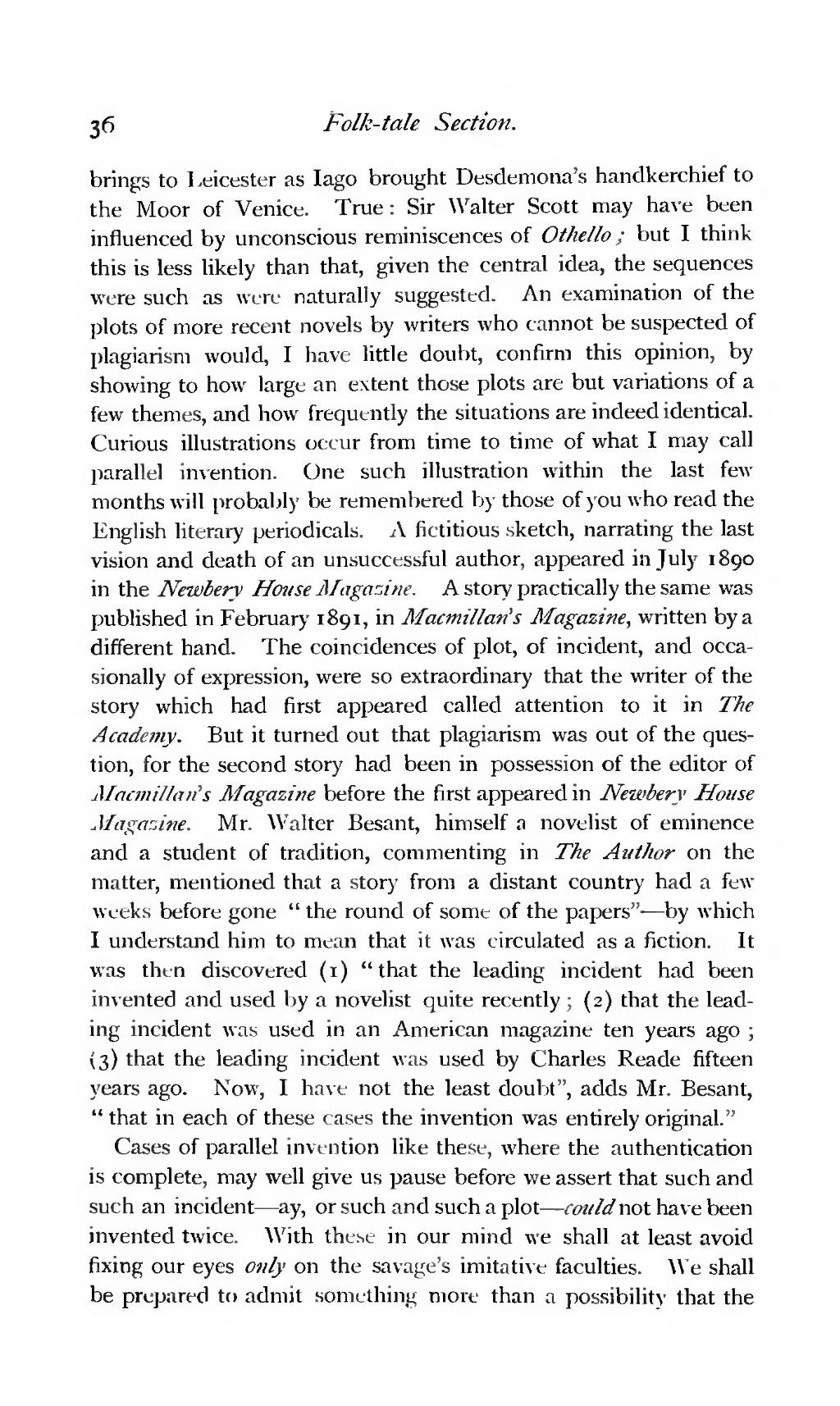brings to Leicester as lago brought Desdemona's handkerchief to the Moor of Venice. True: Sir 'alter Scott may have been influenced by unconscious reminiscences of Othello; but I think this is less Hkely than that, given the central idea, the sequences were such as were naturally suggested. An examination of the plots of more recent novels by writers who cannot be suspected of plagiarism would, I have little doubt, confirm this opinion, by showing to how large an extent those plots are but variations of a few themes, and how frequently the situations are indeed identical. Curious illustrations occur from time to time of what I may call parallel invention. One such illustration within the last few months will probably be remembered by those of you who read the English literary periodicals. A fictitious sketch, narrating the last vision and death of an unsuccessful author, appeared in July 1890 in the Newbery House Magazine. A story practically the same was published in February 1891, in Macmillan's Magazine, written by a different hand. The coincidences of plot, of incident, and occasionally of expression, were so extraordinary that the writer of the story which had first appeared called attention to it in The Academy. But it turned out that plagiarism was out of the question, for the second story had been in possession of the editor of Macmillan's Magazine before the first appeared in Newbery House Magazine. Mr. Walter Besant, himself a novelist of eminence and a student of tradition, commenting in The Author on the matter, mentioned that a story from a distant country had a few weeks before gone "the round of some of the papers"—by which I understand him to mean that it was circulated as a fiction. It was then discovered (1) "that the leading incident had been invented and used by a novelist quite recently; (2) that the leading incident was used in an American magazine ten years ago; (3) that the leading incident was used by Charles Reade fifteen years ago. Now, I have not the least doubt", adds Mr. Besant, "that in each of these cases the invention was entirely original."
Cases of parallel invention like these, where the authentication is complete, may well give us pause before we assert that such and such an incident—ay, or such and such a plot—could not have been invented twice. With these in our mind we shall at least avoid fixing our eyes only on the savage's imitative faculties. We shall be prepared to admit something more than a possibility that the
